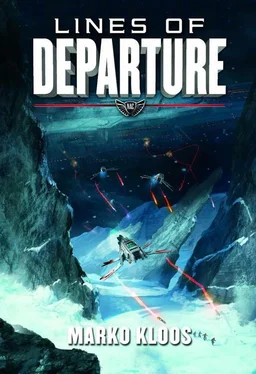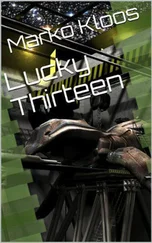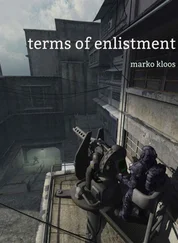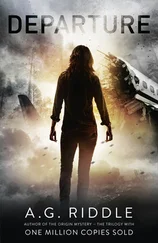The worst part is always the moment just before the launch, when the pod’s bumpy ride on the ordnance carousel stops and you know you’re now chambered in a titanium-alloy missile tube like a cartridge in a rifle barrel. It’s the moment before the plunge, the last few seconds before the electric firing mechanism shoots the pod out into the cold darkness of space and right into the teeth of the enemy’s orbital defenses. Once the pod is on the way, my fear always subsides a little, but in those few heartbeats before a pod launch, I’m always nearly scared enough to shit my pants.
The launcher tube hums as the electric field is activated; there’s a loud whooshing sound made by the air rushing out of the depressurizing launch tube, and then I am pushed back into my cradle as the pod accelerates out of the tube at eight gravities.
I always hold my breath during a launch—not a difficult task at all, with the weight of the acceleration on my chest like a drop ship’s landing skid—and I only allow myself to breathe again when I feel the sensation of weight dropping away as the pod leaves the artificial gravity field of the carrier.
Some troopers start up their helmet displays on the way down, to bring up the tactical screen that shows them the precise location of their pod on the planned trajectory and the exact moment it will pass through the Lanky minefield.
I prefer to ride it out in darkness. I don’t want to know the exact window of my possible sudden death. If I crash into a mine, or one fires its yard-long armor-piercing penetrators at my pod, I’ll be dead in a blink. If I make it through, I’ll know by the sound of superheated air roaring past my pod as I hurtle through the upper layers of the atmosphere.
For the next few minutes, my pod streaks through the hostile vacuum between the carrier and the planet, and I’m in total isolation—sightless, deaf, weightless, and feeling like the loneliest person in the galaxy. There’s nothing to see, nothing to feel, no sensations to distract from the fear. Then my pod gets buffeted a little, and I hear the familiar muted roar of air rushing past the outer skin of my one-way ride. Five more minutes, and the main drag chute will deploy. I will drop onto a strange and hostile world for the 192nd time in my new career. Once more, I’ve won the roll against death and cheated my way past clusters of antiship mines that can turn a frigate into scrap instantly.
Of course, the ingress is the easy part of the mission. I’m about to set foot onto a Lanky-colonized world, and there are many ways to die a quick death down there.
CHAPTER 3
NUCLEAR PEST CONTROL
I know that this drop has gone wrong even before my pod hits the ground. As I descend on my drag chute, I turn on the helmet display to get my bearings, and flinch when I see that our trajectory has carried us right into the target zone. We were supposed to drop a few dozen miles away from the big red square on the map; but our pods are about to touch down twenty-five miles inside of it. Someone else is already on the ground and looking around, because my tactical screen suddenly updates with target markers and threat vectors all around me.
My pod hits the ground with a bone-jarring impact. The lid of the pod blows off automatically, and I see the familiar lead-colored sky of a Lanky-terraformed world overhead. The Lankies like it gloomy—it’s all clouds, rain, and fog, all the time. My pod has adopted a weird nose-down attitude, and as I hit the release buckle of my harness and sit up, I see that our pods came down on a steeply sloped hillside.
“Echo Five is dirtside,” I report on the team channel. “Everything’s in one piece.”
“Fabulous,” Lieutenant Graff replies at once. “Grab your stuff and form up on me. Looks like Arty screwed the pooch on this one.”
I take my rifle out of its storage bracket, check to make sure the barrels are both loaded, and check my computer-augmented field of view for the rest of my team. As far as dispersion goes, the aim of the launch team was outstanding—we’re all within a quarter kilometer of each other. They shot a tight group from a quarter million kilometers away, but they missed the target altogether. As I trot down the hillside to join my team leader, I see a Lanky atmosphere exchanger towering above us not ten klicks away, and a cluster of the weirdly organic Lanky buildings less than two kilometers to our right. Instead of sneaking up to the settled area, we dropped right into it, and unless the locals are asleep or dead, we’ll have a welcoming committee on top of us before too long. The only bright spot so far is the fact that we’re all down and alive. I’ve been on a few missions where someone’s chutes failed to deploy, and the results of a pod impact from high orbit are usually a ten-foot impact crater and some bits and pieces of organic matter mixed in with the mangled wreckage at the bottom. Most of the time, there’s not even enough left to collect dog tags.
We all converge on the lieutenant’s position. There’s no cover nearby, and I feel very exposed on this hillside, in plain view of the nearby Lanky buildings. They’re two kilometers away, but an eighty-foot creature has a very long stride, and we’ve seen the Lankies cover a kilometer in three minutes without seeming in a particular hurry. Thankfully, the lieutenant shares my misgivings.
“We’re sticking out like glowing billboards out here,” he says as we gather around him. “Let’s get off this slope and then figure out how to unfuck this mess.”
“There’s a ravine at ten o’clock, down at the base of the hill,” Corporal Lavoie says. “We can get away from those buildings and stay out of sight.”
“Good enough. Let’s haul ass, people. Dispersed formation, hundred-meter intervals.”
———
We haven’t covered half a kilometer down the rocky slope when we see movement from the direction of the asymmetrical latticework spires of the Lanky buildings. A few moments later, we see the distinct shapes of three Lankies ambling toward our drop zone with slow and measured strides. Lankies never seem to be in a hurry, but once you have one coming after you, there’s no way to outrun it without a vehicle.
“Three incoming from four o’clock, bearing one-ten,” Sergeant Humphrey says in her terse and businesslike Canadian accent. We all had the symbols for “hostile troops” on our displays the moment one of us spotted the Lankies, but ingrained training dies hard. My tactical computer, ever helpful, calculates speeds and movement vectors, and informs me that we will reach the ravine just barely before the welcoming committee arrives at the hillside.
“Double-time,” the lieutenant orders, quite unnecessarily. We run down the hillside as fast as our hundred-pound loads of gear and weapons will allow.
“Turn on the camo, everyone. We hit the ditch, you spread out and lay low.”
Our suits have a brand-new polychromatic camouflage system. It’s an array of tiny electro-optical projectors, designed to blend us in with any terrain. It won’t turn us invisible, but it works well enough that you have to be pretty close to a trooper in polychrome camo to spot them. We don’t know if the Lankies see the way humans do—we don’t even know if they can “see” at all—but the few times where troopers in bug suits have turned on their PC camo to hide from nearby Lankies, nobody has gotten killed. The projector systems drain the batteries of our suits, so we’re only supposed to use them in dire emergencies. As far as I’m concerned, our current malaise qualifies for the classification.
The ravine looks like a desert wadi. It’s twenty meters wide, with a flat bottom that’s smooth and sandy from whatever seasonal torrents sweep through it a few times a year. The edges are steep and craggy, ten feet or more of almost vertical drop to the ravine bottom. We help each other down to the bottom. There are plenty of rocks and boulders of all sizes lining the sides of the ravine, but it occurs to me that the place will be a trap if the Lankies figure out our location, because there’s no quick way back out of here. Down at the bottom, my suit’s sensors no longer have an exact fix on the approaching Lankies, but by the time we have dispersed and ducked behind cover, they’re so close that I don’t need millimeter-wave radar to know they’re almost on top of us.
Читать дальше












